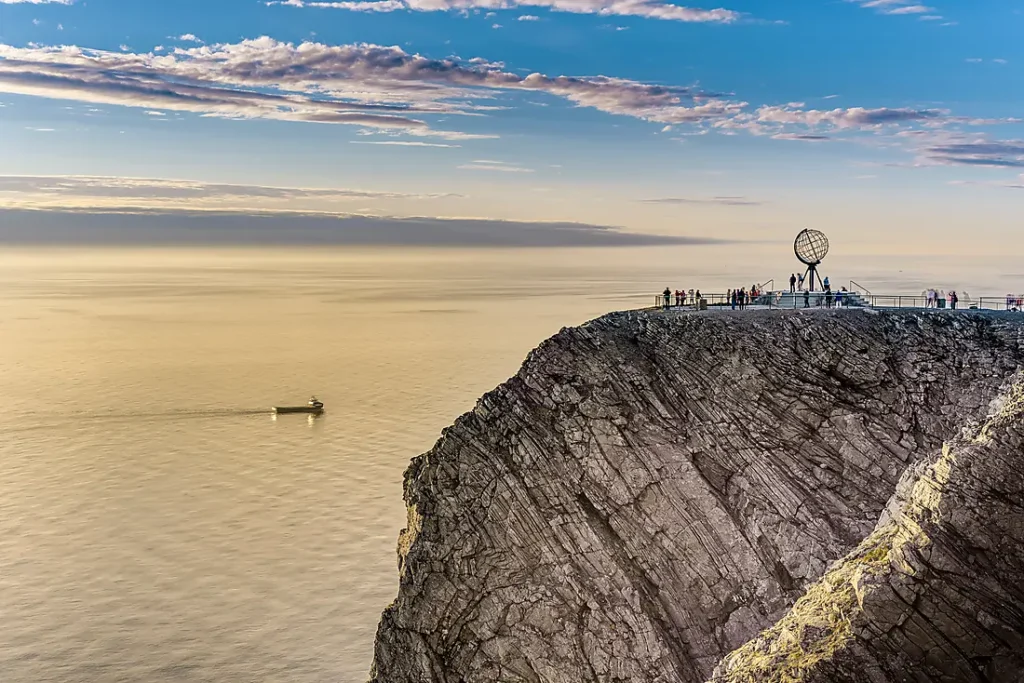Overview
This exciting new 16-day itinerary takes you on a 2,500-nautical mile journey along the legendary Northwest Passage in the Canadian High Arctic, then down the rarelyvisited east coast of Baffin Island to Newfoundland and Labrador, where we’ll visit magnificent Torngat Mountains National Park and the windswept Viking ruins at l’Anse Aux Meadows UNESCO world heritage site. This voyage of discovery also features a visit to the French islands of Saint Pierre and Miquelon, located in the Gulf of the St. Lawrence.
Setting sail from the northern gateway of Qausuittuq (Resolute) in Nunavut, we start our adventure in the middle of the historic Northwest Passage. Your home away from home during this ground-breaking exploration is our technologically-advanced Ultramarine, which is equipped with two twin-engine helicopters, and a fleet of 20 quick-deploy Zodiacs that enable you to get off the ship quickly and efficiently. Throughout this voyage, we’ll set our sights on remote wilderness areas along the east coast of Baffin Island, Labrador and Newfoundland that are only accessible by water. You will also get to explore Beechey Island National Historic Site, Icy Arm Fjord, the small Baffin Island community of Qikiiqtarjuaq, Cape Mercy on southern Baffin Island at the mouth of Cumberland Sound, Torngat Mountains National Park, L’Anse aux Meadows UNESCO world heritage site, the French archipelago of Saint Pierre and Miquelon and, finally, the historic city of St. John’s, Newfoundland.
The geographical range of this expedition is massive. You’ll start at 74.69° N, cross the Arctic Circle at 66.66° N, and ultimately finish your journey in St. John’s, at 47.55° N. Clearly, this is the ideal trip for travelers who long to see as much of the remote Canadian wilderness as possible. In addition to exploring the Territory of Nunavut, as well as Newfoundland and Labrador, we’re especially excited to visit Nunatsiavut, the self-governing region that’s home to the Labrador Inuit who are known as Nunatsiavummiut.
Trip Highlights
- Visit the Viking ruins at L’Anse Aux Meadows UNESCO world heritage site
- Explore the unrivalled wilderness of Torngat Mountains National Park
- Journey along the legendary Northwest Passage
- Visit the French archipelago of Saint Pierre and Miquelon, off the coast of Newfoundland
- Learn about Indigenous culture in Qikiiqtarjuaq
- Voyage along the staggeringly beautiful east coast of Baffin Island
- Witness unsurpassed views of the Arctic wilderness while heli flightseeing aboard Ultramarine’s twin-engine helicopters.
Itinerary
Please fill out the form below to request a quote for rates.
Cost Includes
- Leadership throughout your voyage by our experienced Expedition Leaders, including shore landings and other activities
- All Zodiac transfers and cruising as per the daily program
- All shore landings as per the daily program
- Shipboard accommodation with daily housekeeping
- Complimentary beer, standard wines, spirits, and cocktails during bar service hours and dinner
- Complimentary coffee, tea, and cocoa available around the clock
- Formal and informal presentations by our Expedition Team and guest speakers as scheduled
- A photographic journal documenting the expedition
- A pair of waterproof expedition boots on loan for landings and Zodiac cruising excursions
- An official Quark Expeditions® parka to keep
- Hair dryer and bathrobes in every cabin
- Complimentary Wi-Fi service on one device permitting basic Internet browsing, email, posting on social media and voice applications. (Premium packages are available for more data intensive applications.)
- All miscellaneous service taxes and port charges throughout the program
- All luggage handling aboard the ship
- Emergency Evacuation insurance for all passengers to a maximum benefit of USD $500,000 per person
Cost Excludes
- Mandatory Transfer Package
- International airfare
- Arrival and departure transfers in Calgary and St. John's
- Passport and visa expenses
- Canadian eTA required non-Canadian or U.S. visa exempt passengers
- Meals ashore unless otherwise specified
- Baggage, cancellation, interruption and medical travel insurance—strongly recommended
- Excess-baggage fees on international and domestic flights
- Mandatory waterproof pants for Zodiac cruising, or any other gear not mentioned
- Laundry, bar, beverage and other personal charges unless specified
- Phone and Internet charges (connectivity may vary by location)
- Voluntary gratuity at the end of the voyage for shipboard staff and crew
- Additional overnight accommodation
- Adventure Options not listed in Included Activities
Map


















